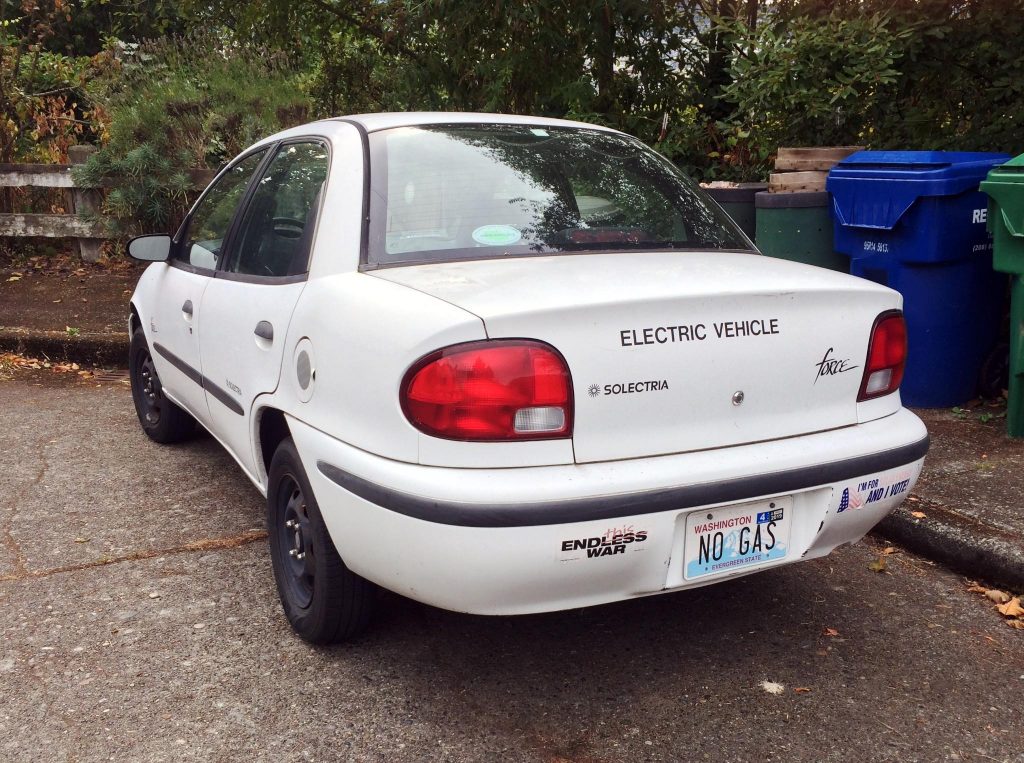
12-1/2 years ago Pam and I bought a 1997 Solectria Force. This is a car that was produced at Solectria’s plant by installing an electric drive system and battery in a Geo Metro ‘glider’ that was never a gas car. After driving it around we soon wondered why this sort of car wasn’t available for everybody. We are still driving it, powered by reclaimed Leaf batteries.
Although there were a few hundred legacy EVs left from the 1990’s California Zero Emissions Vehicle mandate, no new factory-built highway-capable EVs would hit the streets until 2008 and the Tesla Roadster, which was fascinating, but out of reach. In 2010 word was out about Nissan’s Leaf program and we signed up, getting our Leaf in July 2011. Driving the Leaf convinced us that anyone would want to drive one of these. The Chevy Volt that hit the market at about the same time provided a plug-in car that could also drive distances, and the effort to sell middle class car buyers a plug-in model was launched.
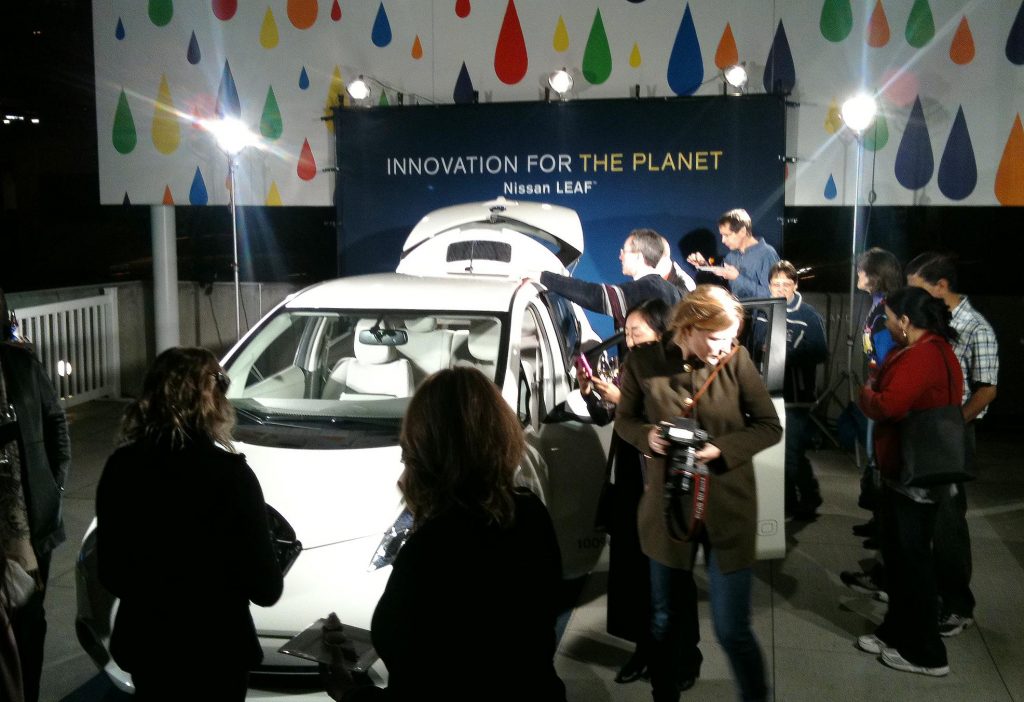
Since then the EV industry has established a firm foothold, but adoption on the scale that is needed to cut carbon emissions effectively has not yet happened.
That is why National Drive Electric Week encourages people to attend EV car shows, ride & drives, and other events happening from Sept 8 – Sept 16th, 2018.
Transportation is our biggest carbon emitter here in the Puget Sound region, and passenger cars are a large component of that. Driving a plug-in car and generating solar power at home is an incredibly powerful way to kick fossil fuels to the curb.
Here’s how it has worked out for us so far: In a typical year our (2) EVs will use about 5,000 kilowatt-hours of electricity, or about $650 for (2) cars for a year, versus about $2,000 for gas. Also there are no tune-ups, oil changes, injectors, hoses, fuel pumps, filters, carburetors, so much lower operating and maintenance costs.
Over the whole period that we have been driving electric vehicles we have saved about $14,700, and kept 33 tons of carbon emissions from happening.
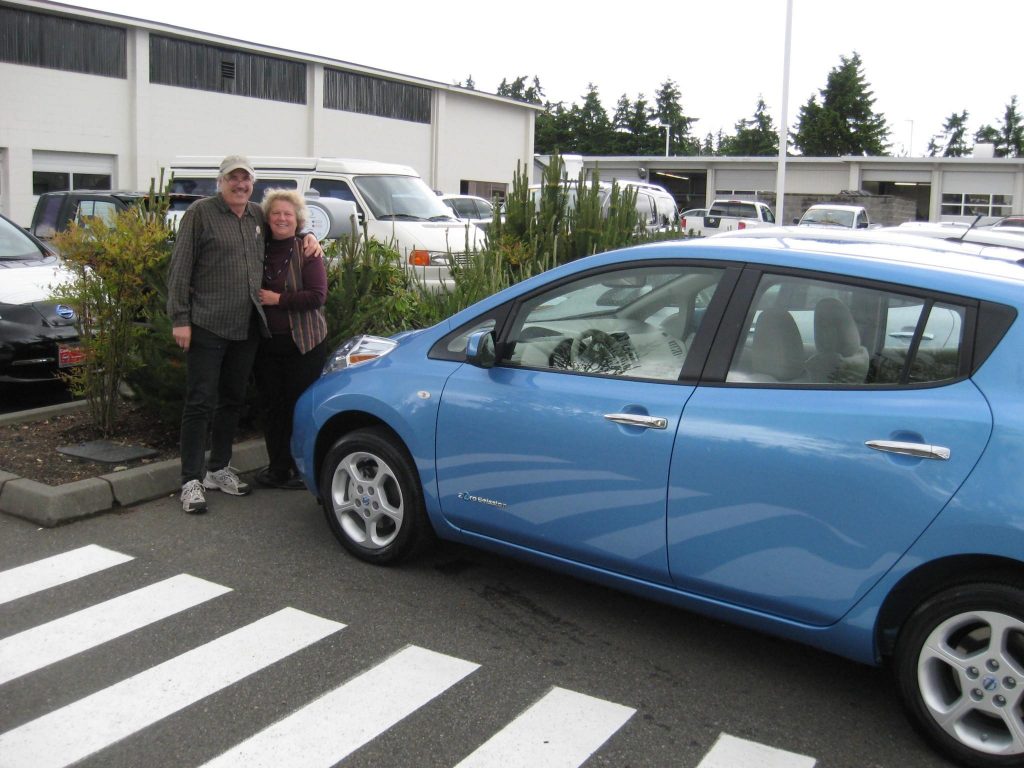
Puget Sound Solar is as committed to the adoption of electric transportation as we are to the adoption of solar energy because we are running out of time to mend our ways. In addition to driving a RAV4 EV by Tesla and Transit Connect Van by Azure Dynamics, we offer public charging at our shop, and have installed about 750 EV charging stations.
Help do your part; drive electric!
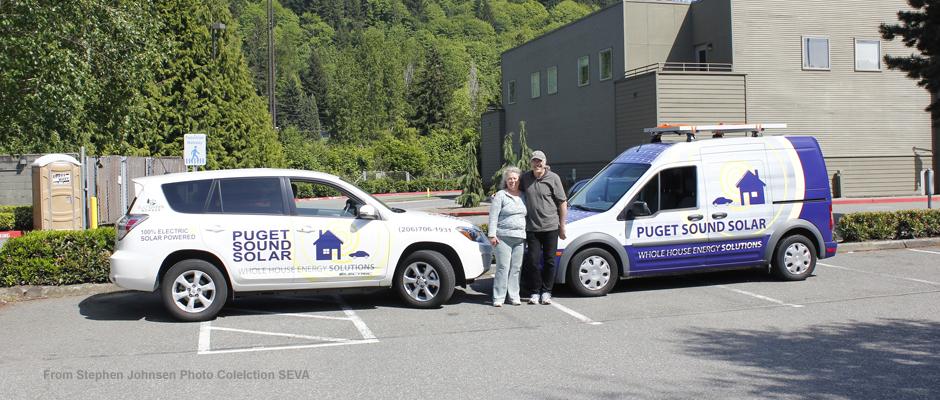
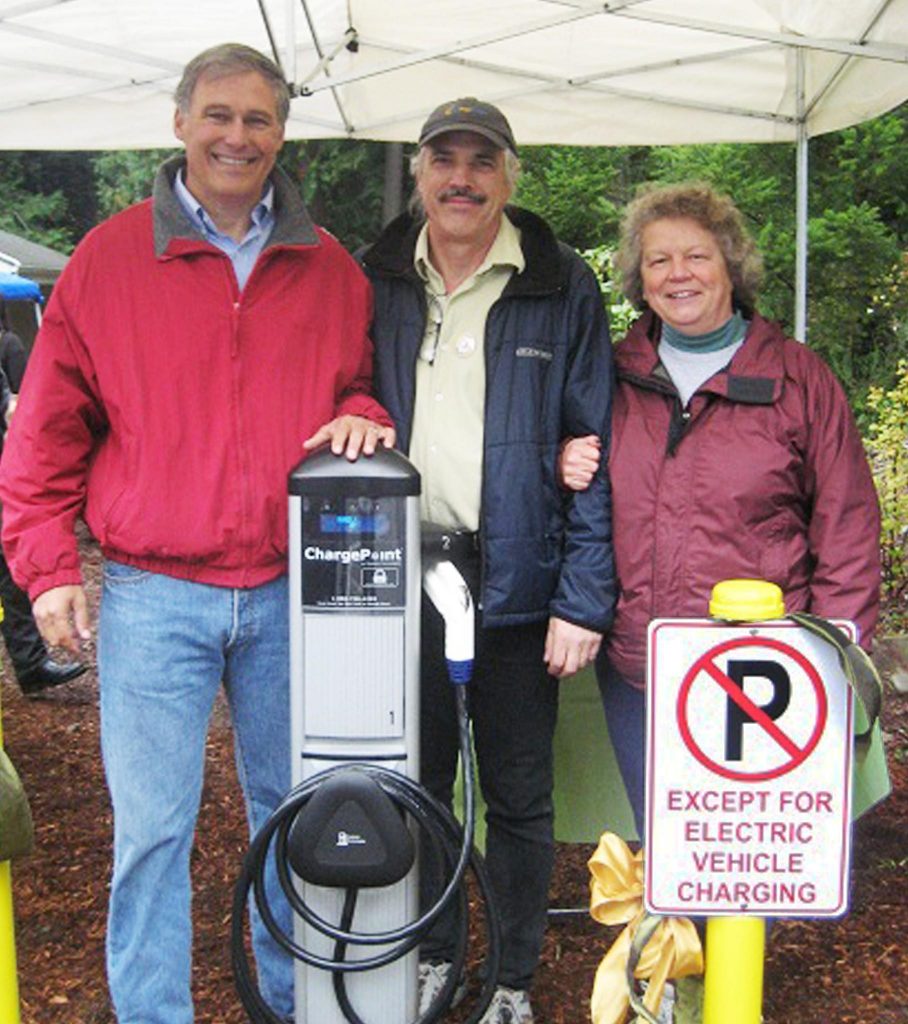
It seems like it’s been ages, but this was our first public charging station installation eight years ago at the Wooden Cross church in Woodinville for Pastor Woody Carlson and the environmental stewardship committee.
